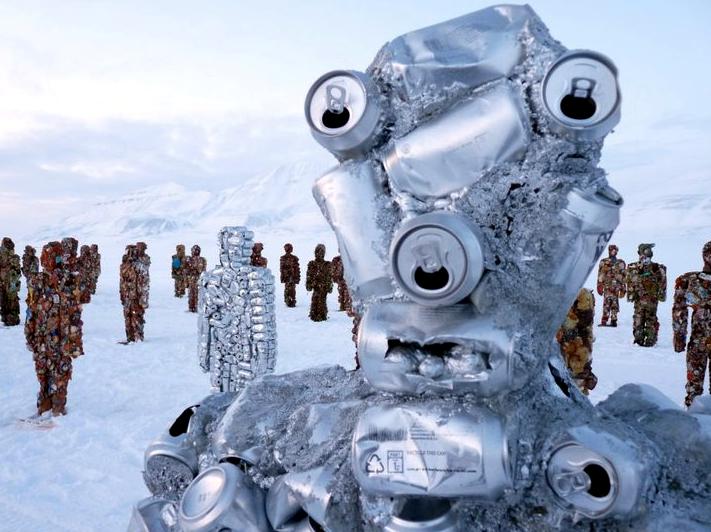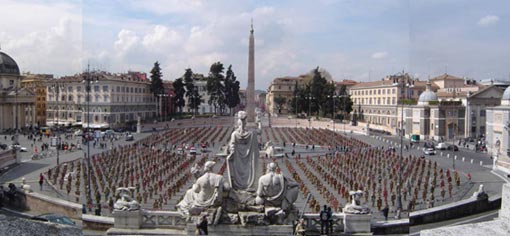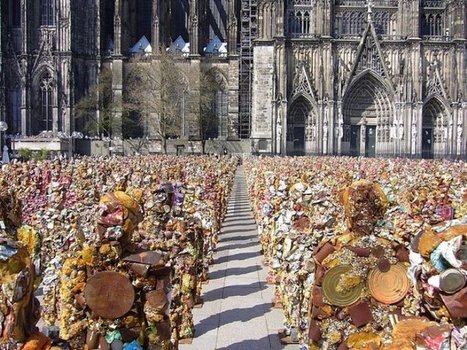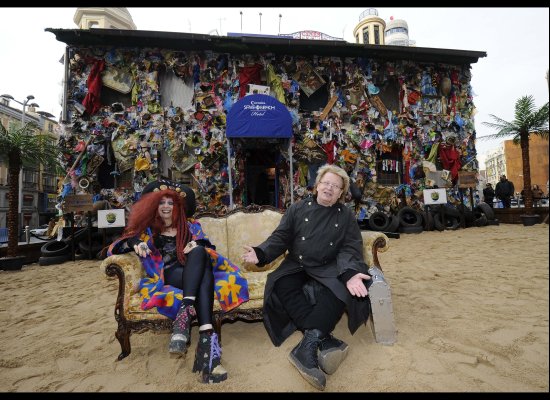I want to tell you about the world famous ‘Trash People’ Exhibition that showing in Ariel Sharon Park, just outside of Tel Aviv. The park, which itself is built on the Hiriya, what was Israel’s largest landfill site, and has been transformed into an ecological oasis, hosting the Trash People , a project by German artist HA Schult. The exhibition features 20 tons of iron, glass, computer parts and industrial waste, something only photos do justice.
Ha Schult installed his army of life sized trash people all over the world...
On the ice in the Arctic at Longyearbyen, Svalbard, Norway



In Rome...


in Gizeh, Egypt...

Next to Cologne Cathedral, Germany...


In the Matterhorn (On the border between Switzerland and Italy)...


On the Great Wall, China...

In St. Basil's Moscow

and now in Tel Aviv...
In 1969, Schult caught the attention of the world with his art action "Situation Schackstrasse." The happening consisted of covering a street in Munich with trash and paper, and police immediately arrested the artist. But that was only the beginning -- the projects grew as Schult changed urban venues.
In 1976, he filled St. Mark's Square in Venice with old newspapers in an overnight action that surprised the authorities, Venetians and art lovers alike. In another work, for a car fetish show, he installed a mythical golden-winged Ford Fiesta on top of a column marking the entrance to the Cologne's City Museum, where it stands to this day. In New York, HA Schult hired a stunt pilot to 'crash' a Cessna into the garbage dump on Staten Island and, in 1983, he created a paper river in downtown New York, using old issues of the New York Times, with the North and South towers of the World Trade Center as a backdrop." His latest creation has been a Garbage Hotel set up in Spain made of beach debris.
In 1976, he filled St. Mark's Square in Venice with old newspapers in an overnight action that surprised the authorities, Venetians and art lovers alike. In another work, for a car fetish show, he installed a mythical golden-winged Ford Fiesta on top of a column marking the entrance to the Cologne's City Museum, where it stands to this day. In New York, HA Schult hired a stunt pilot to 'crash' a Cessna into the garbage dump on Staten Island and, in 1983, he created a paper river in downtown New York, using old issues of the New York Times, with the North and South towers of the World Trade Center as a backdrop." His latest creation has been a Garbage Hotel set up in Spain made of beach debris.


It was in 1996, when German artist HA Schult, first came up with the idea of life–sized trash people as reflections of ourselves. The installation took more than six months and was done with the help of 30 assistants. The material for the project was collected at the municipal depot in Cologne, Germany. The "Trash People" are molded from tin cans, computers, car parts, plastics. Thus, the whole installation was made out of the waste we constantly produce every day. HA Schult delivers his picture of us, and our consequences to the planet.

Don't forget to Design your world
Shir :)












